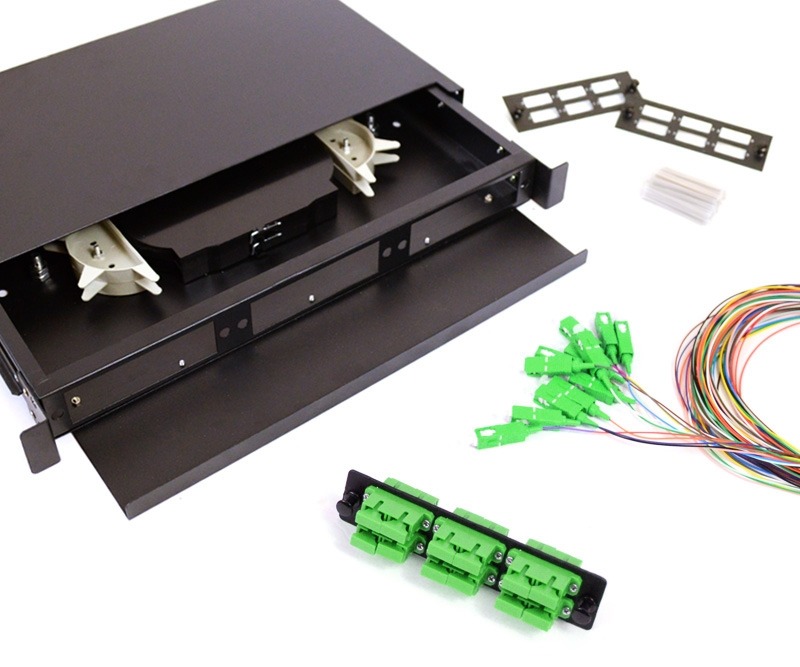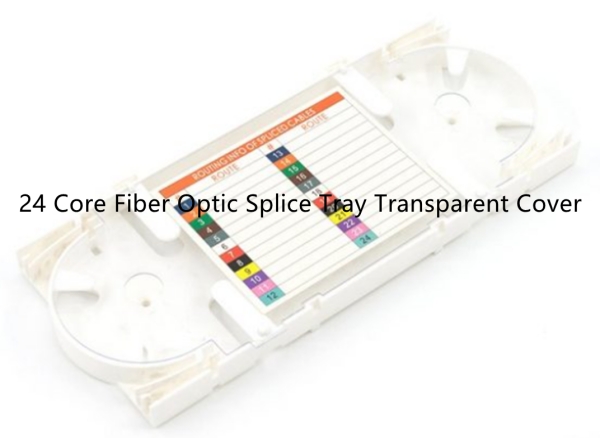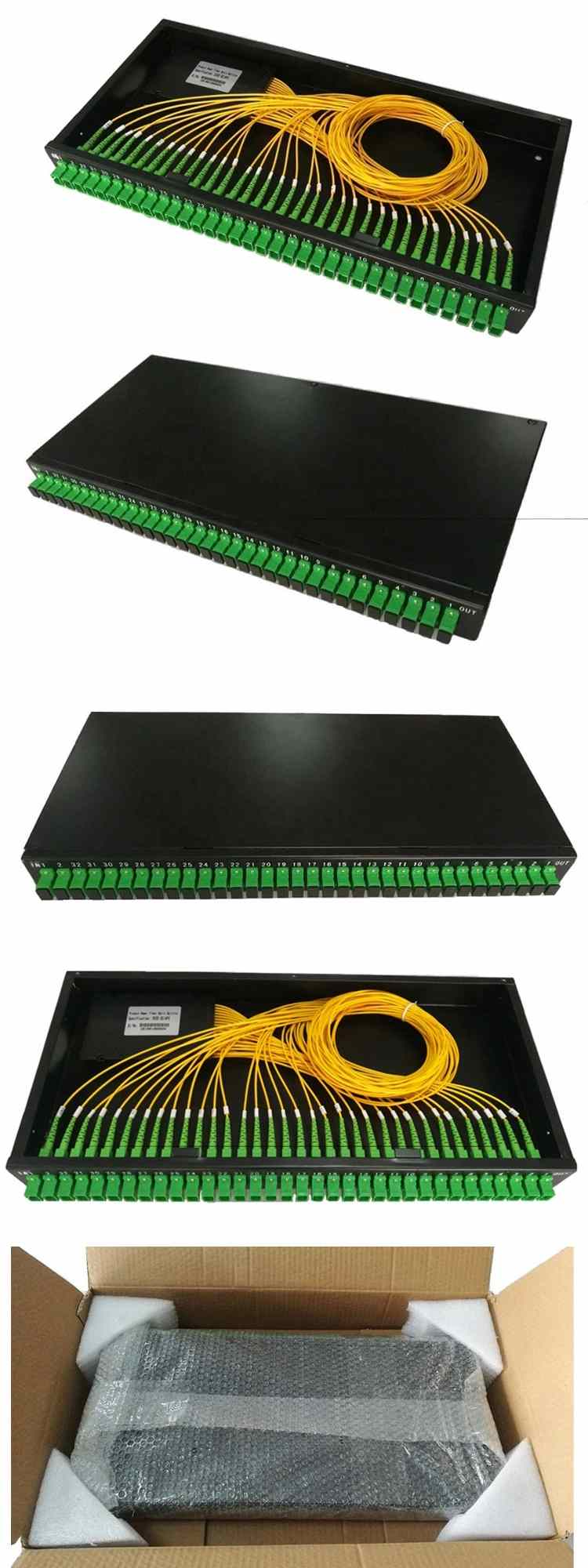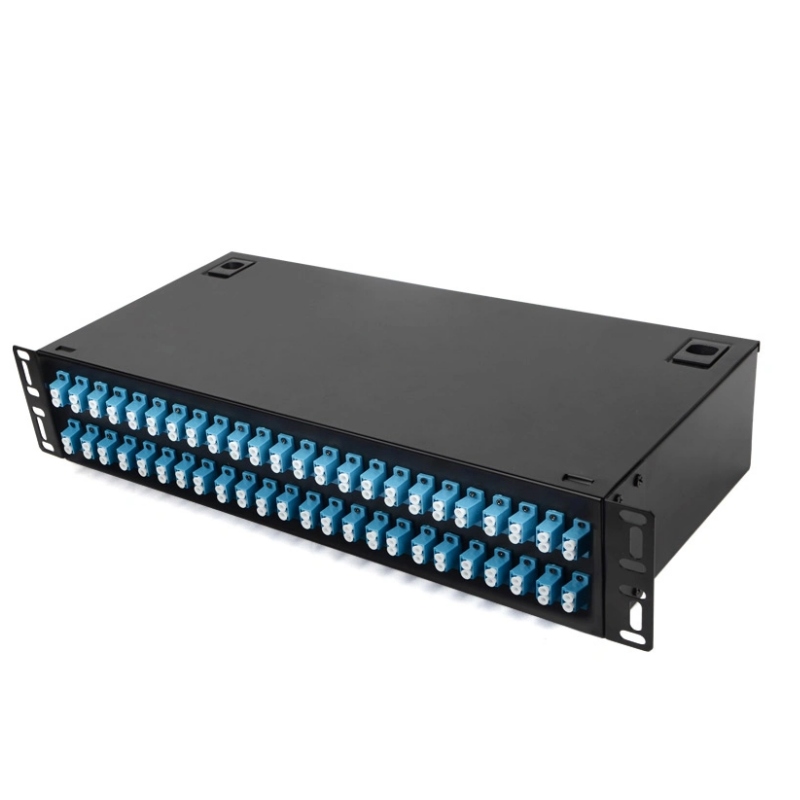Fiber Optic Patch Panel - Efficient Distribution Hub for Fiber Cables
Fiber optic patch panel act as a central distribution hub for fiber cables.
You can use it to connect multiple optical fiber cables and optical equipment, providing a reliable interface for fiber optic communication.

1. What is Fiber Optic Patch Panel
Fiber optic patch pane act as a central distribution hub for fiber cables. You can use it to connect multiple optical fiber cables and optical equipment, aiming for providing a reliable interface for fiber optic communication.
These patch panels are typically mounted onto 19”/ 21”/ 23” rack systems, and some are wall-mountable, making them suitable for a variety of installation locations.

The patch panel is usually constructed of a metal enclosure that houses adapter panels, fiber splicing trays and excess fiber storage. The bulk fiber cable enters the patch panel, and each fiber strand is separated into individual strands or pairs of strands, which then connect to optical devices.

The splicing trays(As the pic above) are neatly embedded in the enclosure to provide fusion with fiber optic pigtails, which in turn plug into the fixed inside adapter ports of the adapter panel.
A patch panel is essentially an array of ports on one panel, with each port connecting to another port located elsewhere in a building. This enables efficient distribution of fiber cables and provides a reliable interface for fiber optic communication.
2. Benefits of Fiber Optic Patch Panel
Fiber optic patch panels provide an efficient and organized way to terminate fiber optic cables and connect different devices. Here are some of the benefits of using a fiber patch panel:
- Facilitates easy termination of fiber optic cables, minimizing errors and improving connectivity.
- Well-organized and easy-to-manage connections of all the input jacks/ports into a patch panel in a central location, making it easier to identify and manage connections.
- Provides an easier means to connect different devices in different orders as all of the changes can be made at the patch panel, reducing the need to access individual devices.
- Avoids cost incurred through wear and tear on the input ports of networking equipment as all the connections are patched using the ports in the patch panels, ensuring that the equipment lasts longer.
3. How to Get Reliable Patch Panel ODF For Your Project
With the growth of the fiber industry, a wide array of fiber optic patch panels have been developed to fit the many needs of varying environments. it's important to consider the following factors:
- Compatibility: Ensure that the patch panel is compatible with the fiber optic cable types you use.
- Capacity: Choose patch panel with enough capacity to support your current and future network requirements.
- Port Density: Consider the number of ports required to support your network and choose a patch panel with the appropriate port density.
- Enclosure Type: Consider the type of enclosure needed for your deployment, whether it's rack-mountable or wall-mountable.
- Fiber Management: Choose a patch panel that provides effective fiber management, such as cable routing, strain relief and slack storage.
- Connector Type: Choose a patch panel that supports the connector types used in your network, such as LC, SC, or ST.
- Quality: Choose a patch panel from a reputable manufacturer to ensure high-quality construction, performance and reliability.
Fibeye ODF Packing

Fibeye provides you with best price fiber patch panels and hard quality control.
Contact us and enjoy it!




